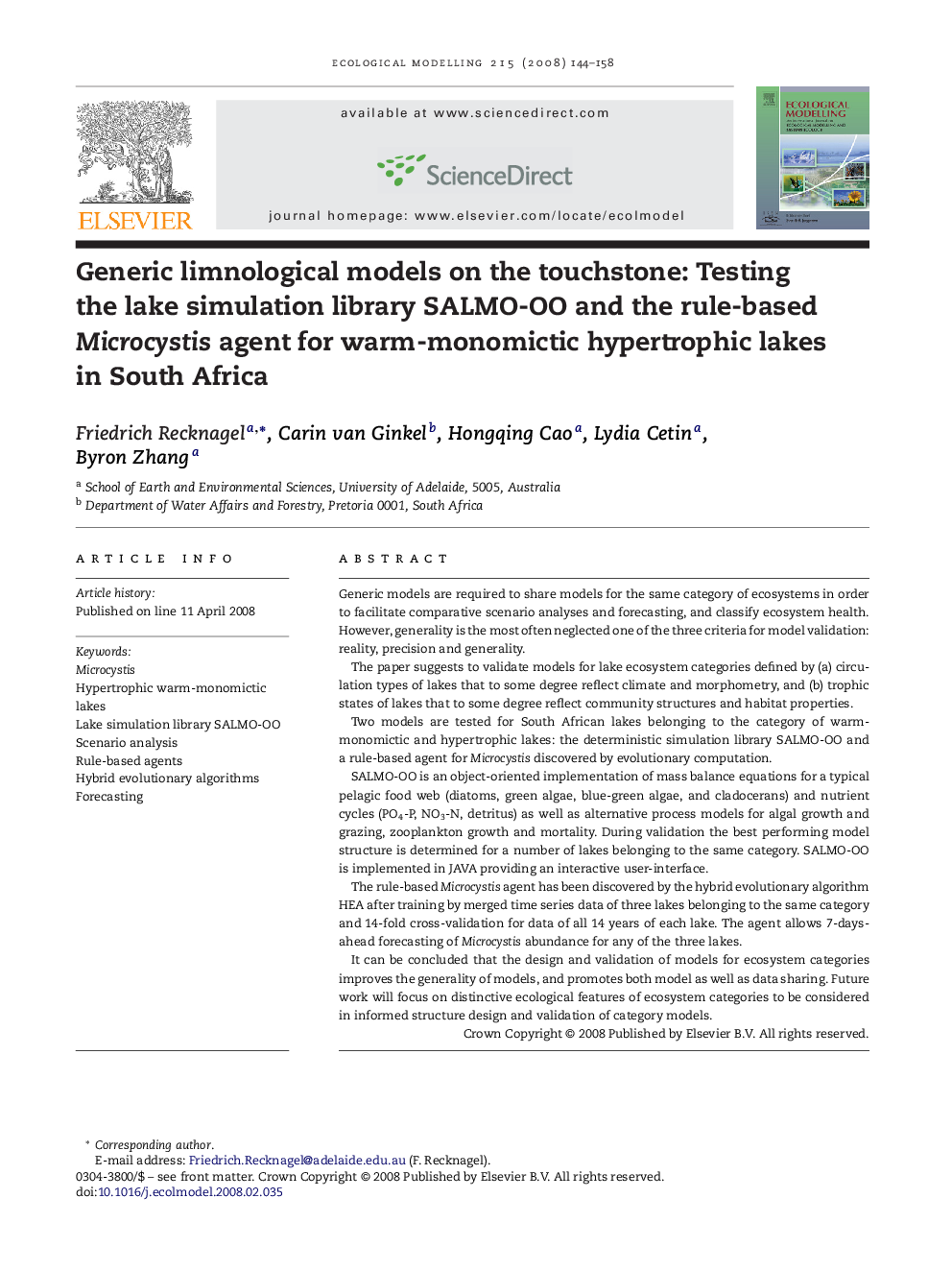| Article ID | Journal | Published Year | Pages | File Type |
|---|---|---|---|---|
| 4378034 | Ecological Modelling | 2008 | 15 Pages |
Generic models are required to share models for the same category of ecosystems in order to facilitate comparative scenario analyses and forecasting, and classify ecosystem health. However, generality is the most often neglected one of the three criteria for model validation: reality, precision and generality.The paper suggests to validate models for lake ecosystem categories defined by (a) circulation types of lakes that to some degree reflect climate and morphometry, and (b) trophic states of lakes that to some degree reflect community structures and habitat properties.Two models are tested for South African lakes belonging to the category of warm-monomictic and hypertrophic lakes: the deterministic simulation library SALMO-OO and a rule-based agent for Microcystis discovered by evolutionary computation.SALMO-OO is an object-oriented implementation of mass balance equations for a typical pelagic food web (diatoms, green algae, blue-green algae, and cladocerans) and nutrient cycles (PO4-P, NO3-N, detritus) as well as alternative process models for algal growth and grazing, zooplankton growth and mortality. During validation the best performing model structure is determined for a number of lakes belonging to the same category. SALMO-OO is implemented in JAVA providing an interactive user-interface.The rule-based Microcystis agent has been discovered by the hybrid evolutionary algorithm HEA after training by merged time series data of three lakes belonging to the same category and 14-fold cross-validation for data of all 14 years of each lake. The agent allows 7-days-ahead forecasting of Microcystis abundance for any of the three lakes.It can be concluded that the design and validation of models for ecosystem categories improves the generality of models, and promotes both model as well as data sharing. Future work will focus on distinctive ecological features of ecosystem categories to be considered in informed structure design and validation of category models.
